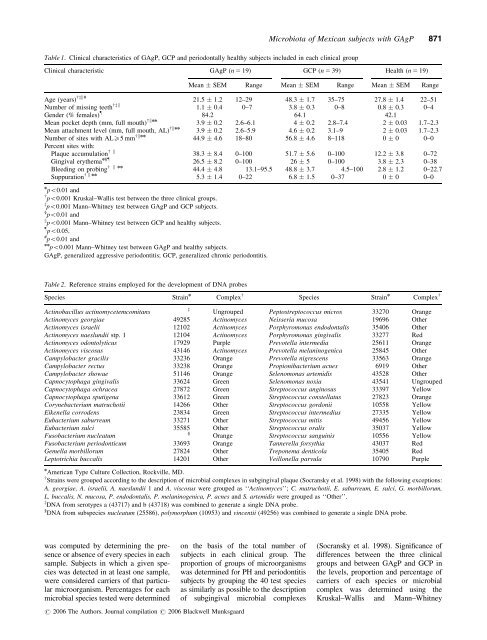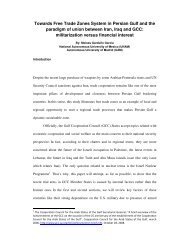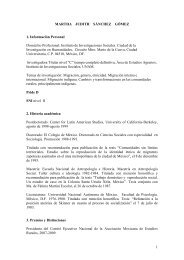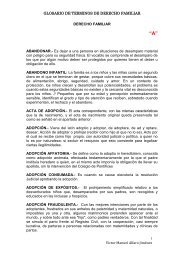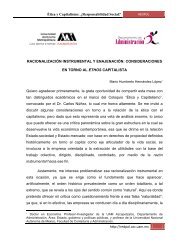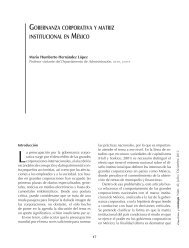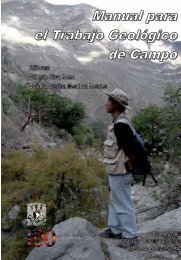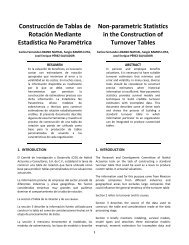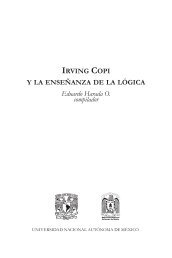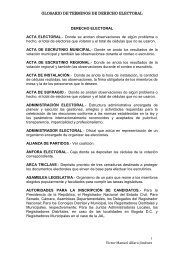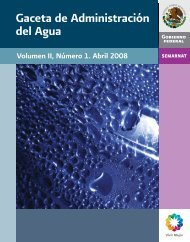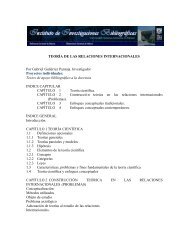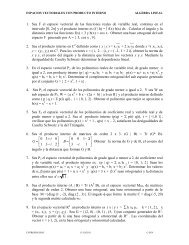PDF(145K) - Wiley Online Library
PDF(145K) - Wiley Online Library
PDF(145K) - Wiley Online Library
Create successful ePaper yourself
Turn your PDF publications into a flip-book with our unique Google optimized e-Paper software.
Table 1. Clinical characteristics of GAgP, GCP and periodontally healthy subjects included in each clinical group<br />
Clinical characteristic GAgP (n 5 19) GCP (n 5 39) Health (n 5 19)<br />
Mean SEM Range Mean SEM Range Mean SEM Range<br />
Age (years) wzk# 21.5 1.2 12–29 48.3 1.7 35–75 27.8 1.4 22–51<br />
Number of missing teeth wzk 1.1 0.4 0–7 3.8 0.3 0–8 0.8 0.3 0–4<br />
Gender (% females) z 84.2 64.1 42.1<br />
Mean pocket depth (mm, full mouth) wknn 3.9 0.2 2.6–6.1 4 0.2 2.8–7.4 2 0.03 1.7–2.3<br />
Mean attachment level (mm, full mouth, AL) wknn 3.9 0.2 2.6–5.9 4.6 0.2 3.1–9 2 0.03 1.7–2.3<br />
Number of sites with ALX5mm wknn 44.9 4.6 18–80 56.8 4.6 8–118 0 0 0–0<br />
Percent sites with:<br />
Plaque accumulation w k 38.3 8.4 0–100 51.7 5.6 0–100 12.2 3.8 0–72<br />
Gingival erythema n§z 26.5 8.2 0–100 26 5 0–100 3.8 2.3 0–38<br />
Bleeding on probing w k nn 44.4 4.8 13.1–95.5 48.8 3.7 4.5–100 2.8 1.2 0–22.7<br />
Suppuration w k nn 5.3 1.4 0–22 6.8 1.5 0–37 0 0 0–0<br />
n po0.01 and<br />
w po0.001 Kruskal–Wallis test between the three clinical groups.<br />
z po0.001 Mann–Whitney test between GAgP and GCP subjects.<br />
§ po0.01 and<br />
k po0.001 Mann–Whitney test between GCP and healthy subjects.<br />
z po0.05,<br />
# po0.01 and<br />
nn po0.001 Mann–Whitney test between GAgP and healthy subjects.<br />
GAgP, generalized aggressive periodontitis; GCP, generalized chronic periodontitis.<br />
Microbiota of Mexican subjects with GAgP 871<br />
Table 2. Reference strains employed for the development of DNA probes<br />
Species Strain n Complex w Species Strain n Complex w<br />
z<br />
Actinobacillus actinomycetemcomitans<br />
Ungrouped Peptostreptococcus micros 33270 Orange<br />
Actinomyces georgiae 49285 Actinomyces Neisseria mucosa 19696 Other<br />
Actinomyces israelii 12102 Actinomyces Porphyromonas endodontalis 35406 Other<br />
Actinomyces naeslundii stp. 1 12104 Actinomyces Porphyromonas gingivalis 33277 Red<br />
Actinomyces odontolyticus 17929 Purple Prevotella intermedia 25611 Orange<br />
Actinomyces viscosus 43146 Actinomyces Prevotella melaninogenica 25845 Other<br />
Campylobacter gracilis 33236 Orange Prevotella nigrescens 33563 Orange<br />
Campylobacter rectus 33238 Orange Propionibacterium acnes 6919 Other<br />
Campylobacter showae 51146 Orange Selenomonas artemidis 43528 Other<br />
Capnocytophaga gingivalis 33624 Green Selenomonas noxia 43541 Ungrouped<br />
Capnocytophaga ochracea 27872 Green Streptococcus anginosus 33397 Yellow<br />
Capnocytophaga sputigena 33612 Green Streptococcus constellatus 27823 Orange<br />
Corynebacterium matruchotii 14266 Other Streptococcus gordonii 10558 Yellow<br />
Eikenella corrodens 23834 Green Streptococcus intermedius 27335 Yellow<br />
Eubacterium saburreum 33271 Other Streptococcus mitis 49456 Yellow<br />
Eubacterium sulci 35585 Other Streptococcus oralis 35037 Yellow<br />
Fusobacterium nucleatum<br />
§<br />
Orange Streptococcus sanguinis 10556 Yellow<br />
Fusobacterium periodonticum 33693 Orange Tannerella forsythia 43037 Red<br />
Gemella morbillorum 27824 Other Treponema denticola 35405 Red<br />
Leptotrichia buccalis 14201 Other Veillonella parvula 10790 Purple<br />
n American Type Culture Collection, Rockville, MD.<br />
w Strains were grouped according to the description of microbial complexes in subgingival plaque (Socransky et al. 1998) with the following exceptions:<br />
A. georgiae, A. israelii, A. naeslundii 1 and A. viscosus were grouped as ‘‘Actinomyces’’; C. matruchotii, E. saburreum, E. sulci, G. morbillorum,<br />
L. buccalis, N. mucosa, P. endodontalis, P. melaninogenica, P. acnes and S. artemidis were grouped as ‘‘Other’’.<br />
z DNA from serotypes a (43717) and b (43718) was combined to generate a single DNA probe.<br />
§ DNA from subspecies nucleatum (25586), polymorphum (10953) and vincentii (49256) was combined to generate a single DNA probe.<br />
was computed by determining the presence<br />
or absence of every species in each<br />
sample. Subjects in which a given species<br />
was detected in at least one sample,<br />
were considered carriers of that particular<br />
microorganism. Percentages for each<br />
microbial species tested were determined<br />
on the basis of the total number of<br />
subjects in each clinical group. The<br />
proportion of groups of microorganisms<br />
was determined for PH and periodontitis<br />
subjects by grouping the 40 test species<br />
as similarly as possible to the description<br />
of subgingival microbial complexes<br />
r 2006 The Authors. Journal compilation r 2006 Blackwell Munksgaard<br />
(Socransky et al. 1998). Significance of<br />
differences between the three clinical<br />
groups and between GAgP and GCP in<br />
the levels, proportion and percentage of<br />
carriers of each species or microbial<br />
complex was determined using the<br />
Kruskal–Wallis and Mann–Whitney


